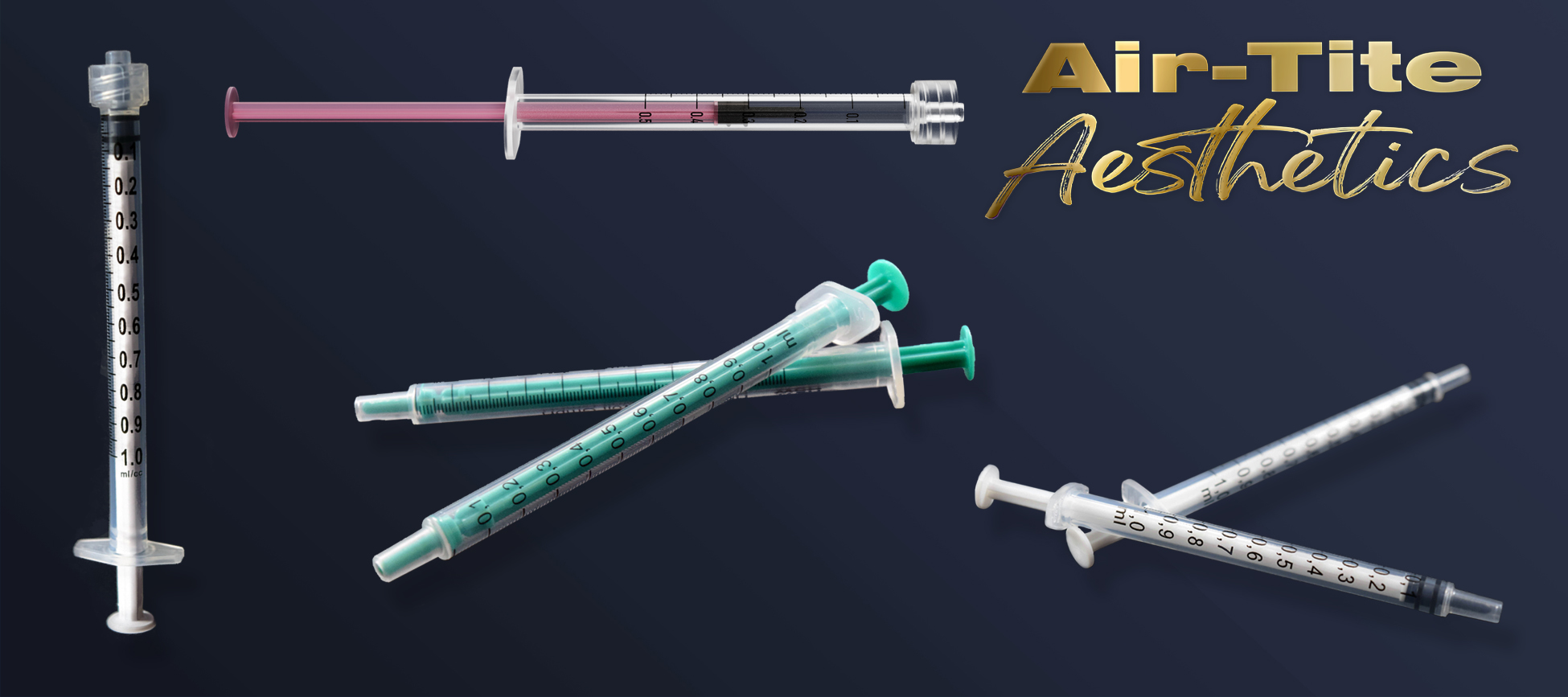
Syringes have come a long way since their initial development. But even today’s traditional syringes come with an inherent design flaw that can become a wasted expense for your modern aesthetics practice. If you haven’t already, here’s how and why you must make the switch to low dead space syringes.
Historians date the medical use of syringes to ancient times when Egyptians described extracting cataracts with glass tubes. Early syringes made from hollow reeds were also documented in Greek and Roman literature, where they had a range of uses, from musical instruments to anointing the body with oil.
The first modern syringes didn’t emerge until around 1650, as the evolution of Pascal’s work in hydraulics crossed into the medical field. Unfortunately, fatal infections due to the lack of knowledge about sterilization delayed the widespread use of syringes until themid-1800s. Then, in 1906, Berlin instrument makers Dewit and Hertz invented the Rekordspritze, a syringe that was less likely to leak or jam and easy to take apart and sterilize.
By the 1950s, plastic enabled a major breakthrough with the development of disposable syringes. Since then, not much has changed in syringe design. But now, low dead space syringes are a welcome improvement for a more efficient and precise practice.
Dead space is the area between the syringe barrel tip and bottom of the plunger in a syringe. After administering an injection, the injectable products get trapped in the dead space. Since syringes can’t be safely reused, leftovers are discarded.
When you consider the number of injections your practice performs day after day, and year after year, it’s easy to see how this waste can add up and start draining your bottom line. That’s why Air-Tite makes it a priority to offer several low dead space syringes with plungers that extend into the tip to minimize waste.
Conventional needles and syringes not only waste expensive fillers but also introduce an element of unpredictability to the precise practice of administering injections and extractions. Clients depend on their clinician for accuracy in delicate procedures around the eyelids, mouth, neck, and more. They also expect to have a reasonable level of comfort during treatments and rely on numbing solutions to prevent avoidable pain.
Unfortunately, studies show that traditional syringes vary widely in dead space volume. For example, in a recent study, researchers tested 5mL syringes and discovered that four out of five brands failed to meet dead space standards set by the International Organization for Standardization (ISO). Dead space in these syringes was over 0.075 mLs. Additionally, one in five brands of 10mL syringes was not up to standard, with over 0.1mL of dead space per syringe.
Fortunately, you can easily reduce product waste by choosing low dead space syringes. Air-Tite offers a range of low dead space syringes from trusted brands.
Air-Tite's MinimLL syringe is the first 0.5 mL low dead space luer lock syringe to hit the U.S. market! The low dead space plunger tip allows for minimal residual volume. MinimLL syringes feature easy-to-read 0.01 mL graduations for precise dosing of the smallest volumes. Its luer lock tip lowers the risk of needle pop-off and allows for exchanging between needles for draw up and needles for injection. The unique pink plunger on the MinimLL syringe indicates a percentage of sales will be donated to breast cancer research and awareness programs.
The B. Braun Omnifix Luer Lock Syringe has a low dead space plunger with fine graduation in 0.01mL increments designed with high contrast markings to ensure accurate measurements. Using a polystyrene plunger with an integrated backstop, these German-engineered syringes help prevent accidental plunger withdrawal. Maintain slow aspiration and injection control with the rubber piston fitted with a polyisoprene double sealing ring. Clients with allergies and sensitivities will be happy to hear that these syringes are free of latex, PVC, and DEHP. They’re also certified by ISO 9001 and FDA registered.
Additionally, we carry a selection of Henke-Ject and Norm-Ject Luer Slip and Luer Lock syringes with low dead space tips. The positive stop helps you avoid accidental pull-out.
Henke-Ject syringes have a synthetic rubber-tipped piston, lubricated for a smooth draw. For a non-reactive and chemically resistant syringe, the Norm-Ject is an ideal (silicone-free) choice.
Finally, our Exel Luer Lock and Luer Slip syringes have siliconized gaskets for consistent and controlled use. Many clinicians are capitalizing on maximum product savings by pairing low dead space needles with their choice of low dead space syringes.
To effectively save product, it is also important to measure correctly. Measuring with a low dead space syringe is exactly like measuring with a standard syringe. You draw up your medication or product to the fiducial line. The fiducial line is the ring on the plunger that aligns with the zero (0 mL) line on the syringe barrel when the plunger is fully depressed. The graduations marked on the syringe barrel already account for the extended tip on the low dead space plunger, so you don’t need to make any adjustments to your dosing calculations! Be sure not to measure from the end of the extended plunger tip.
You can see a visual representation of the fiducial line in the following video:
Find the advanced tools and technology you need to keep patients happy.